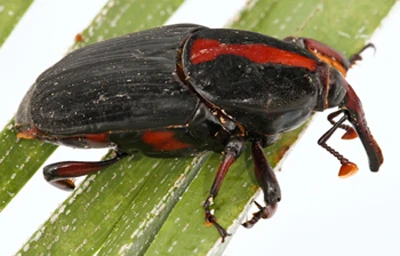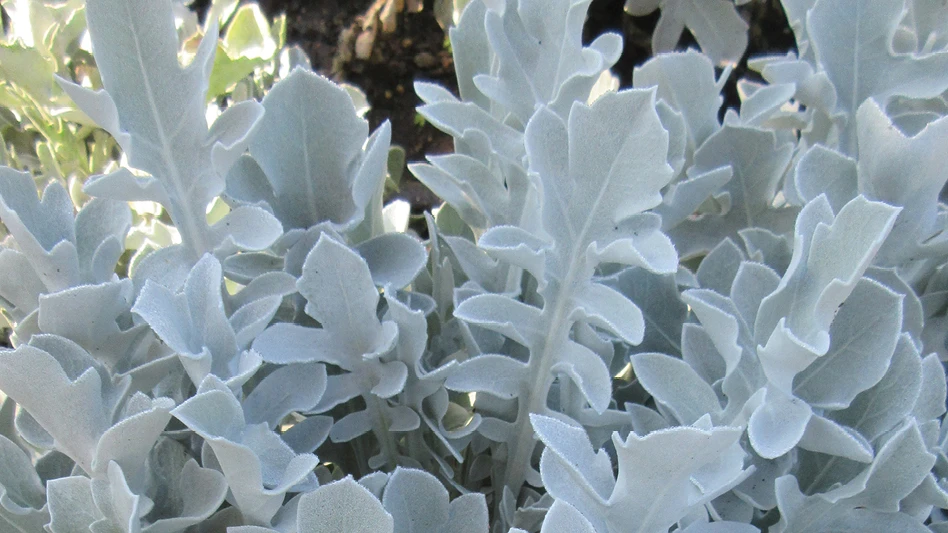
In August a large dying Canary Island date palm (Phoenix canariensis) being removed from a residence in Laguna Beach, Calif., was found to contain Rhynchophorus ferrugineus (Red Palm Weevil) adults and larvae with larval feeding damage in the top portions of the palm trunk. In response to the weevils collected, state and federal survey crews deployed pheromone baited traps. Visual surveys of other palms in the area surrounding the find site were conducted. These visual surveys have confirmed the presence of R. ferrugineus at the original collection site. This represents the first time R. ferrugineus has been found in the U.S. Survey efforts are underway around Laguna Beach to determine if an infestation of the weevil exists, how widespread it is, and if it will be possible to contain and perhaps eradicate this highly destructive palm pest.
Earlier this month the infected tree was removed to prevent the continued possible breeding and spread of the weevil to other areas in the immediate vicinity.
Red Palm Weevil is widely considered to be the most damaging insect pest of palms in the world. The weevils are usually attracted to unhealthy palm trees, but they will often attack healthy palms too. The weevil larvae feed within the apical growing point of the palms creating extensive damage to palm tissues and weakening the structure of the palm trunk.
Red Palm Weevil is native to Southeast Asia. International trade in live palms is the most likely way the pest has moved long distances. The weevil may establish readily in new areas because it travels with its food supply, or there are other palms nearby that it can infest once larvae finish developing and emerge as new adults that abandon their original host plant.
Pictured: In August a Canary Island date palm in Laguna Beach, Calif., was found to contain Rhynchophorus ferrugineus (Red Palm Weevil) adults and larvae. It is the first time the weevil has been found in the U.S.
Photo by John Kabashima, Univ. of Calif. Coop. Ext., Orange County
Latest from Greenhouse Management
- BioTherm launches the Ultimate Grower Climate Control System
- Jess Lyga joins Bailey sales team
- Happy holidays from the GIE Media Horticulture Group!
- North Carolina Nursery & Landscape Association announces new executive vice president
- Plant Development Services, Inc. unveils plant varieties debuting in 2025
- Promo kit available to celebrate first National Wave Day on May 3
- Applications now open for American Floral Endowment graduate scholarships
- Endless Summer Hydrangeas celebrates 20 years with community plantings





